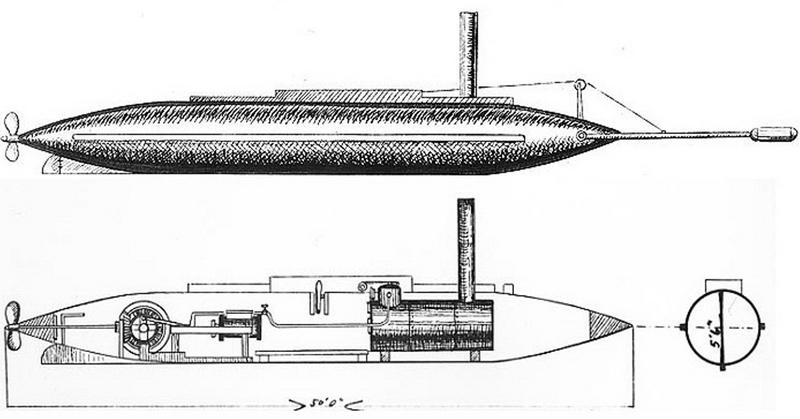This Day In History: A Sub Named David
By | September 28, 2022

C.S.S. David
During the Civil War, the Confederacy commissioned the construction of about 20 submarines, including the C.S.S. David. The cigar-shaped, submersible torpedo boat was designed by St. Julien Ravenel, a medical doctor, agricultural chemist, and explicitly not a naval engineer who helped develop phosphate-based fertilizers after the war but fancied himself a Renaissance man. In 1863, the finished vessel, designed to carry a 134-lb. gunpowder charge, was placed under the control of the Confederate Navy. Its depth in the water and smokeless engine allowed the David patrol the waters virtually unseen, especially at night.

David's Moment In The Sun (Er, Water)
As the war heated up, Union officials set up a blockade in Charleston Harbor to halt the transport of weapons, supplies, and other war materials to and from Confederate troops. When the Union Navy brought in ironclad ships, it seemed like the blockade would remain unbreakable. The only hope was a surprise bombing, so on October 5, 1863, Lieutenant William T. Glassell of the Confederate State Navy piloted the C.S.S. David under cover of darkness toward the U.S.S. New Ironsides.
Glassell got within about 50 yards of the ship without being detected, but then a night watchman aboard the ironclad spotted him, so Glassell pulled out his shotgun and killed the guard before exploding the torpedo beneath the New Ironsides, sending a column of water high into the air and extinguishing the ship's boilers. To the Confederacy's dismay, the New Ironsides was damaged but not sunk and the Union blockade remained intact, but they did kill three crew members, so that was something.

Where Is C.S.S. David Now?
The fate of the C.S.S. David is murky until 1998, when Dr. E. Lee Spence, an underwater archaeologist with the Sea Research Society, and radar operator Pete Petrone of National Geographic located the suspected remains of two Confederate torpedo boats buried under the streets of Charleston. The location corresponds closely to information in a postwar letter penned by David C. Ebaugh that mentions where the David was abandoned in the war's final days, but the site hasn't yet been excavated, so the C.S.S. David's final resting place remains up in the air (or rather, below the sea).

